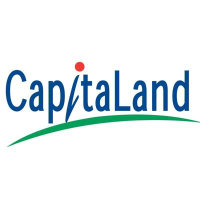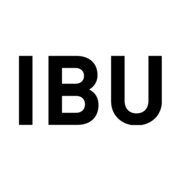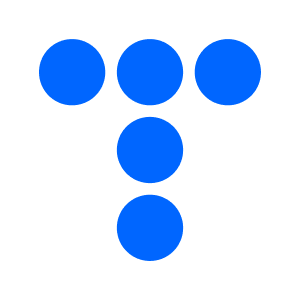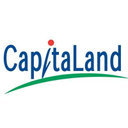
Evolution Mining Ltd
ASX:EVN


| US |

|
Johnson & Johnson
NYSE:JNJ
|
Pharmaceuticals
|
| US |

|
Berkshire Hathaway Inc
NYSE:BRK.A
|
Financial Services
|
| US |

|
Bank of America Corp
NYSE:BAC
|
Banking
|
| US |

|
Mastercard Inc
NYSE:MA
|
Technology
|
| US |

|
UnitedHealth Group Inc
NYSE:UNH
|
Health Care
|
| US |

|
Exxon Mobil Corp
NYSE:XOM
|
Energy
|
| US |

|
Pfizer Inc
NYSE:PFE
|
Pharmaceuticals
|
| US |

|
Palantir Technologies Inc
NYSE:PLTR
|
Technology
|
| US |

|
Nike Inc
NYSE:NKE
|
Textiles, Apparel & Luxury Goods
|
| US |

|
Visa Inc
NYSE:V
|
Technology
|
| CN |

|
Alibaba Group Holding Ltd
NYSE:BABA
|
Retail
|
| US |

|
JPMorgan Chase & Co
NYSE:JPM
|
Banking
|
| US |

|
Coca-Cola Co
NYSE:KO
|
Beverages
|
| US |

|
Walmart Inc
NYSE:WMT
|
Retail
|
| US |

|
Verizon Communications Inc
NYSE:VZ
|
Telecommunication
|
| US |

|
Chevron Corp
NYSE:CVX
|
Energy
|
Utilize notes to systematically review your investment decisions. By reflecting on past outcomes, you can discern effective strategies and identify those that underperformed. This continuous feedback loop enables you to adapt and refine your approach, optimizing for future success.
Each note serves as a learning point, offering insights into your decision-making processes. Over time, you'll accumulate a personalized database of knowledge, enhancing your ability to make informed decisions quickly and effectively.
With a comprehensive record of your investment history at your fingertips, you can compare current opportunities against past experiences. This not only bolsters your confidence but also ensures that each decision is grounded in a well-documented rationale.
Do you really want to delete this note?
This action cannot be undone.

| 52 Week Range |
4.81
12.76
|
| Price Target |
|
We'll email you a reminder when the closing price reaches AUD.
Choose the stock you wish to monitor with a price alert.

|
Johnson & Johnson
NYSE:JNJ
|
US |

|
Berkshire Hathaway Inc
NYSE:BRK.A
|
US |

|
Bank of America Corp
NYSE:BAC
|
US |

|
Mastercard Inc
NYSE:MA
|
US |

|
UnitedHealth Group Inc
NYSE:UNH
|
US |

|
Exxon Mobil Corp
NYSE:XOM
|
US |

|
Pfizer Inc
NYSE:PFE
|
US |

|
Palantir Technologies Inc
NYSE:PLTR
|
US |

|
Nike Inc
NYSE:NKE
|
US |

|
Visa Inc
NYSE:V
|
US |

|
Alibaba Group Holding Ltd
NYSE:BABA
|
CN |

|
JPMorgan Chase & Co
NYSE:JPM
|
US |

|
Coca-Cola Co
NYSE:KO
|
US |

|
Walmart Inc
NYSE:WMT
|
US |

|
Verizon Communications Inc
NYSE:VZ
|
US |

|
Chevron Corp
NYSE:CVX
|
US |
This alert will be permanently deleted.
Evolution Mining Ltd
Evolution Mining Ltd., an Australian gold miner, has carved a strategic niche in the international mining landscape through a blend of operational proficiency and a keen focus on sustainability. Founded in 2011, Evolution emerged from a merger of three resourceful companies, quickly establishing itself as a formidable player in the gold mining industry. The company operates several projects across Australia and Canada, notably its flagship mine, Cowal, in New South Wales. These assets offer a robust production capacity and long mine life, contributing significantly to the firm's overall output. By efficiently managing these resources through best-in-class practices and cutting-edge technology, Evolution Mining has managed to optimize its gold extraction process, increasing yield while minimizing environmental impact.
The firm's business model is grounded in the notion of creating value through the entire lifecycle of its assets. From exploration to development, and finally, to extraction, Evolution Mining continually seeks to enhance shareholder value. Its revenue stream flows primarily from the sale of gold, which is refined and marketed globally. Additionally, Evolution’s strategy of disciplined cost management ensures profitability even amidst volatile market conditions. By focusing on high-quality, low-cost assets and maintaining a relentless drive for operational excellence, Evolution Mining not only sustains its profitability but also positions itself for future growth in the ever-changing landscape of precious metals. This steadfast approach, coupled with a commitment to safety and community engagement, underscores its standing as a conscientious leader in the mining sector.

Evolution Mining Ltd., an Australian gold miner, has carved a strategic niche in the international mining landscape through a blend of operational proficiency and a keen focus on sustainability. Founded in 2011, Evolution emerged from a merger of three resourceful companies, quickly establishing itself as a formidable player in the gold mining industry. The company operates several projects across Australia and Canada, notably its flagship mine, Cowal, in New South Wales. These assets offer a robust production capacity and long mine life, contributing significantly to the firm's overall output. By efficiently managing these resources through best-in-class practices and cutting-edge technology, Evolution Mining has managed to optimize its gold extraction process, increasing yield while minimizing environmental impact.
The firm's business model is grounded in the notion of creating value through the entire lifecycle of its assets. From exploration to development, and finally, to extraction, Evolution Mining continually seeks to enhance shareholder value. Its revenue stream flows primarily from the sale of gold, which is refined and marketed globally. Additionally, Evolution’s strategy of disciplined cost management ensures profitability even amidst volatile market conditions. By focusing on high-quality, low-cost assets and maintaining a relentless drive for operational excellence, Evolution Mining not only sustains its profitability but also positions itself for future growth in the ever-changing landscape of precious metals. This steadfast approach, coupled with a commitment to safety and community engagement, underscores its standing as a conscientious leader in the mining sector.
On-Track Guidance: Evolution Mining confirmed it is on track to deliver FY '26 commitments for production, costs, and capital, with all major projects on schedule and on budget.
Strong Cash Flow: The company delivered record net mine cash flow of $366 million, with group cash flow at $196 million for the quarter, and expects significantly higher cash flows if current metal prices persist.
Safety Performance: Safety metrics continued to improve, with the total recordable injury frequency rate (TRIF) remaining below 5.
Project Updates: Mungari’s plant expansion was completed 15% under budget, now set for commercial production, while Cowal’s key infrastructure project remains on track.
Capital Management: Gearing has improved to 11%, all term loans have been repaid with no further debt repayments due until FY '29.
Market Tailwinds: Management highlighted structural shifts in gold (central bank buying) and copper (tight supply and rising demand), supporting strong price outlooks.
Cost Guidance Maintained: All-in sustaining cost (AISC) guidance remains at $1,720–$1,880/oz, with current performance below the guided range.






































